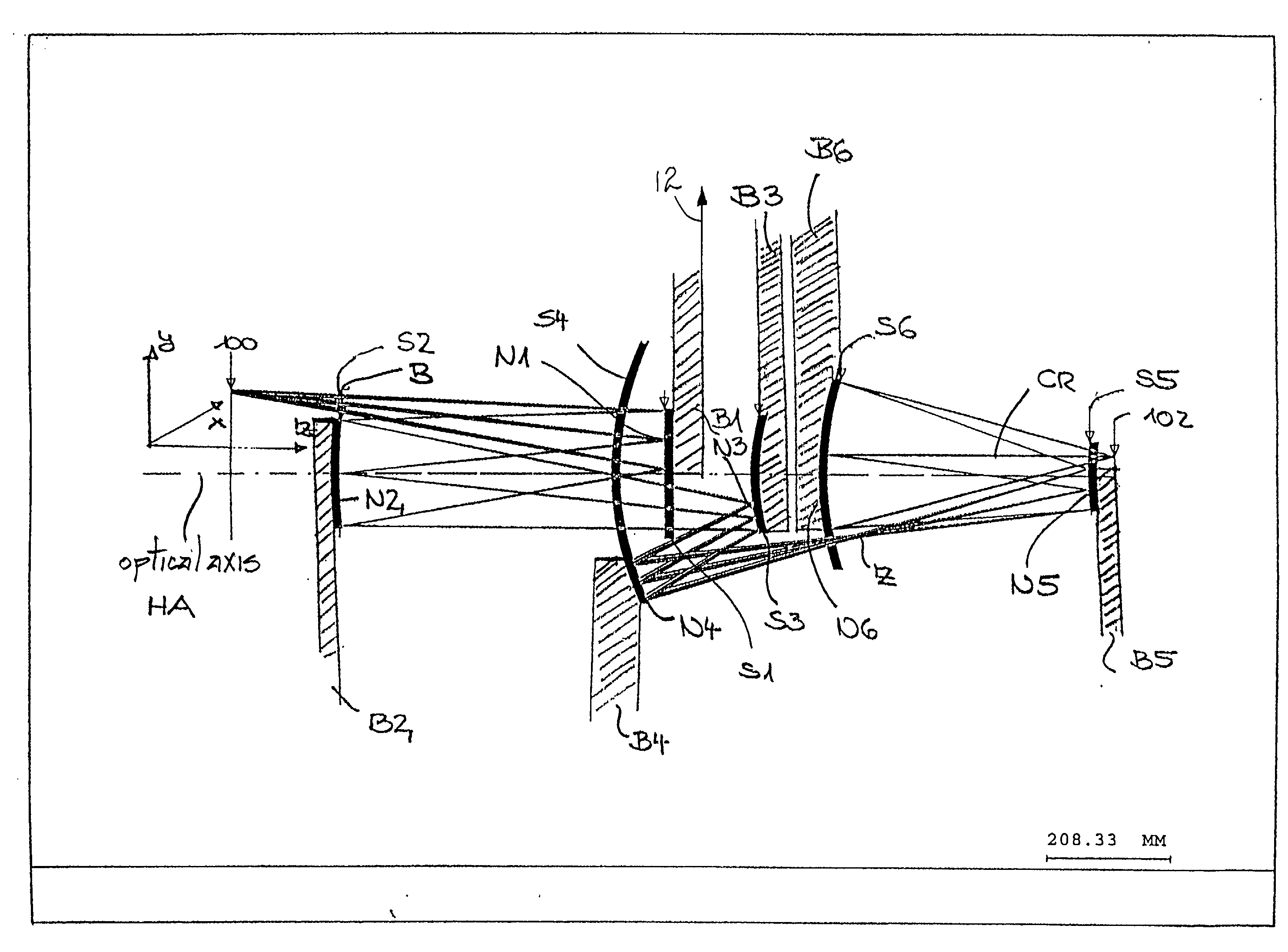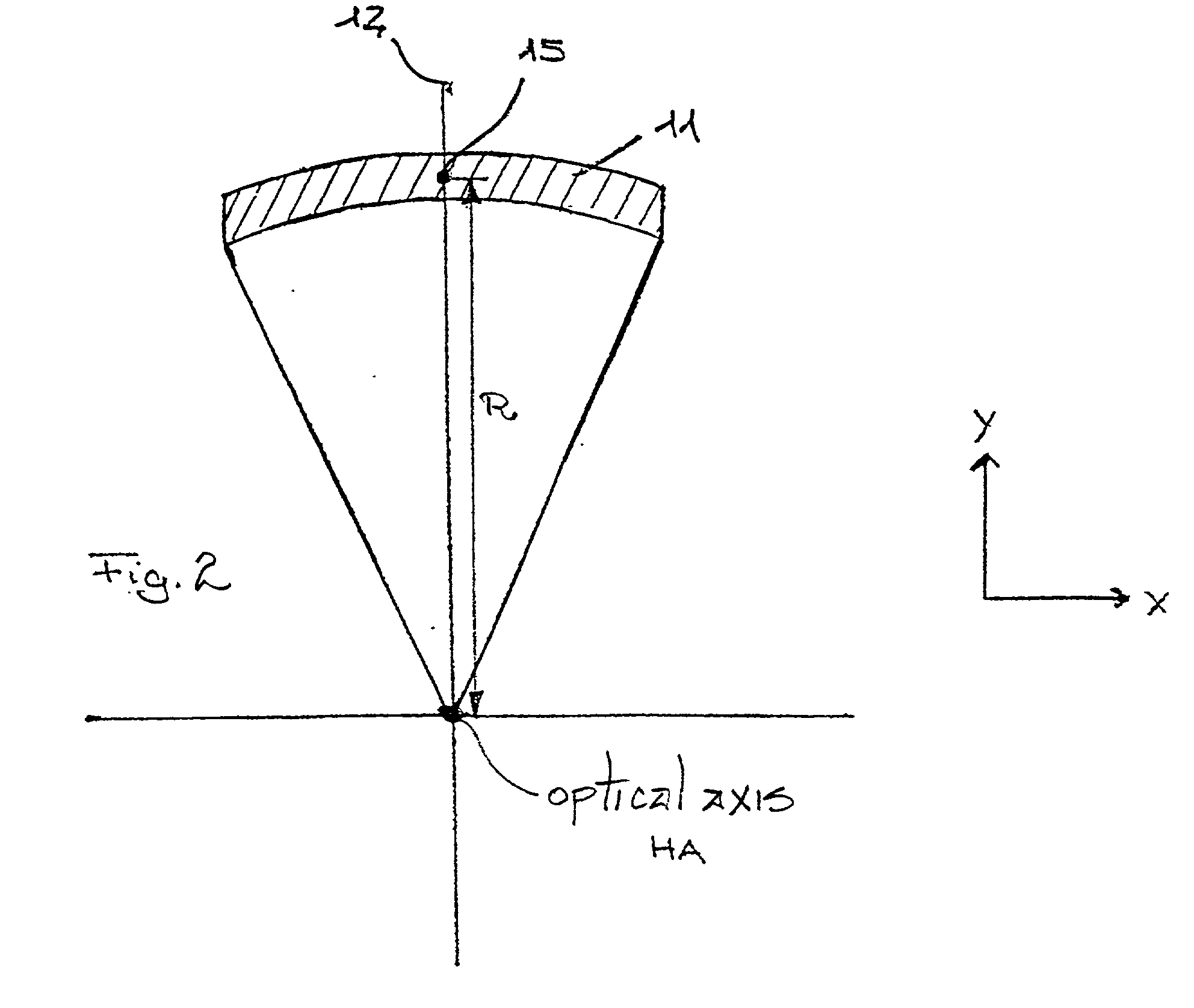6-mirror microlithography projection objective
a microlithography and objective technology, applied in the field of microlithography objectives, can solve the problems of very high aspheric inability to achieve euv range practical aspheric deviation and incidence angles, and very unstable mirrors
- Summary
- Abstract
- Description
- Claims
- Application Information
AI Technical Summary
Benefits of technology
Problems solved by technology
Method used
Image
Examples
embodiment 1
[0073] In addition, the example of embodiment 1 according to FIG. 4 involves a system with intermediate image Z. The intermediate image Z is formed geometrically after the first mirror S1 between the fourth and fifth mirrors S4, S5. The system according to FIG. 4 is divided into two subsystems by intermediate image Z: a first subsystem comprising mirrors S1, S2, S3, and S4, as well as a second subsystem comprising mirrors S5 and S6.
[0074] The volume claims B1 to B4 and B6 of mirrors S1 to S4 and S6 amount to at least 50 mm, and the volume claim B5 of the fifth mirror amounts to at least one-third of the diameter of the volume claim of the fifth mirror, so that a free working distance between the fifth mirror S5 next to the wafer and image plane 102 of at least 12 mm is guaranteed.
first embodiment
[0075] The Code V data of the first embodiment according to FIG. 4 are shown in Table 1 in FIG. 11. Here the element numbers 1, 2, 3, 4, 5, 6 designate mirrors S1, S2, S3, S4, S5 and S6.
[0076] The numerical aperture of the system on the image side according to example of embodiment 1 amounts to 0.25.
second embodiment
[0077] the invention is shown in FIG. 5. The components that are the same as in FIG. 4 are given the same reference numbers. Again, all six mirror surfaces are aspheric, but in contrast to the embodiment according to FIG. 4, the first mirror S1 is not convex, but rather concave.
[0078] The Code V data of the system are shown in Table 2 in FIG. 12. The numerical aperture of the projection objective according to FIG. 5 amounts to NA=0.25, as in the case of the first form of embodiment according to FIG. 4.
[0079] In the example of embodiment according to FIG. 5, according to the invention, the diameter D of the off-axis segments of all mirrors arranged in the objective are less than 300 mm, whereby the object to be imaged is the segment of a ring field, as shown in FIG. 2.
[0080] The off-axis segment in the x-y plane of the respective mirror of the second example of embodiment according to FIG. 5 is shown in FIGS. 6a to 6f. The x-y coordinate system as defined by the object plane is denot...
PUM
| Property | Measurement | Unit |
|---|---|---|
| diameter | aaaaa | aaaaa |
| wavelengths | aaaaa | aaaaa |
| diameter | aaaaa | aaaaa |
Abstract
Description
Claims
Application Information
 Login to View More
Login to View More - R&D
- Intellectual Property
- Life Sciences
- Materials
- Tech Scout
- Unparalleled Data Quality
- Higher Quality Content
- 60% Fewer Hallucinations
Browse by: Latest US Patents, China's latest patents, Technical Efficacy Thesaurus, Application Domain, Technology Topic, Popular Technical Reports.
© 2025 PatSnap. All rights reserved.Legal|Privacy policy|Modern Slavery Act Transparency Statement|Sitemap|About US| Contact US: help@patsnap.com



